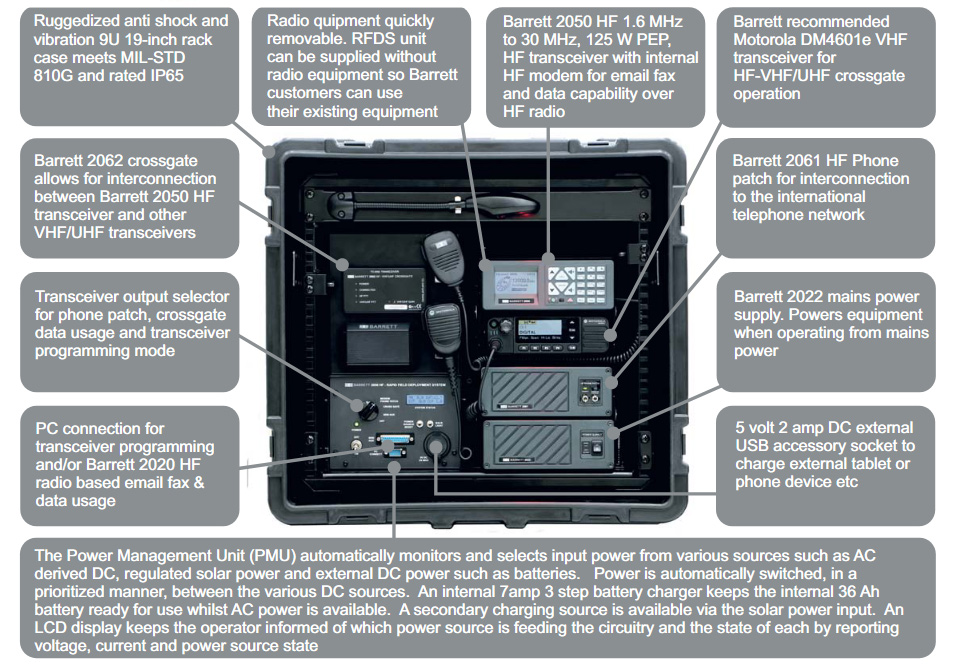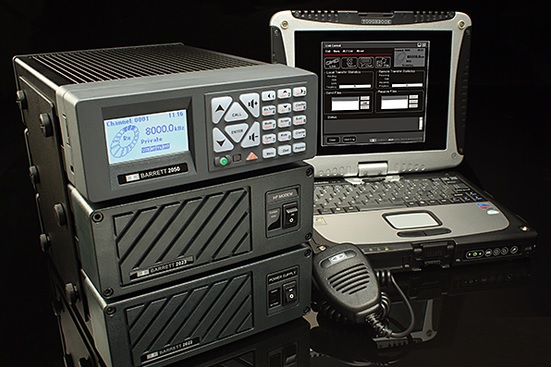
#Barrett 2050 hf radio for free
Protocol available for free distribution. Manpack 22 V DC to 27 V DC (100-260 VAC or 11 to 16 V DC with power adaptor)Ĥ70 mA standby (muted, back lighting off)īased on CCIR 493-4, four and six digit systems. The Barrett frequency hopping system requires no master station, all stations are synchronised and ready to communicate on switch on, synchronisation is not effected by propagation or local interference and there is no late entry synchronisation delayĢ050 to 13.8 V DC +20% / -10% (negative ground) polarity protected. 30Â☌ to +70Â☌ humidity 95% relative, non-condensingrĢ5 or 5 hops per second with external syncronisation unit (ESU) supplied when the option is fitted. J3E (USB, LSB) – H3E (AM) – J2A (CW) – J2 (AFSK) Optional J2B (AFSK) with narrow filter Â☑0 Hz or better than 0.3 ppm over temperature range -30Â☌ to +70Â☌ Up to 500 programmable channels (simplex or semi-duplex)
#Barrett 2050 hf radio download
Please download the Brochure to view it.Exceeds/complies with Australian/ New Zealand standard AS/NZS 4770:2000 and AS/NZS 4582:1999Įxceeds/complies with EMC and vibration standard IEC 945Ĭomplies with MIL-STD 810G for drop, dust, temperature, shock and vibration Unable to view PDF, this browser does not support PDFs. Standards: FCC approved – Part 90 exceeds/complies with Australian/ New Zealand standard AS/NZS 4770:2000 and AS/NZS 4582:1999 EMC, and vibration standard IEC 945 complies with MILSTD 810G for drop, dust, temperature, shock and vibration NTIA approved.Duty cycle: 100 % two tone input signal with fan option.RF output power: 125 W PEP voice ± 1.5 dB or 30 W PEP voice ± 1.5 dB or 10 W PEP voice ± 1.5 dB.Sensitivity: -120 dBm (0.224 uV) for 10 dB SINAD – J3E Mode.Current consumption: 470 mA standby (muted, back lighting off), voice average less than 9 amps typical, two tone less than 12 amps typical.

Selcall system: based on CCIR 493-4, four and six digit systems.Supply voltage: 2050 -13.8 V DC (negative ground) polarity protected.Frequency hopping: 25 or 5 hops per second.Operating temperature: -30 ° to 70 ☌, humidity 95 % relative, non-condensing.


for HF SSB Transceiver for FCC ID OW4-BARRETT2050HF.
#Barrett 2050 hf radio series
Pairing the 2050 transceiver with other 2000 Series products provides email, fax, telephone and data connectivity within an HF network, and onwards to both the international telephone network and the internet.

The 2050, housed in a lightweight, extremely strong sealed aluminium chassis, meets MILSTD 810G for drop, dust, temperature, shock and vibration. This HF SSB transceiver provides all common modes of HF transmission, all currently used selective call formats, MILSTD 188-141B automatic link establishment, and a new generation, simple to operate, frequency hopping option. The Barrett 2050 is a versatile and rugged 1.6 MHz to 30 MHz, 125 W PEP, field proven HF transceiver that can be easily configured to customers’ exact operational requirements.


 0 kommentar(er)
0 kommentar(er)
